Check out some books by your tutor Fiona Veitch Smith … (click on the book covers to find out more)
 This is the sixth session in my online creative writing course. This week we’ll be looking at:
This is the sixth session in my online creative writing course. This week we’ll be looking at:
In my experience as a creative writing teacher I’ve discovered that there are two types of writers: those who are good at dialogue, and those who are not. If you are good at dialogue, make sure you’re not just writing a script; if you’re poor at dialogue, you need to allow your characters to break out of their headspace and address the reader face-to-face.
Finding your voice
 When a publisher or editor talks about finding your voice, they’re not just talking about how your characters speak, but your distinctive tone of voice as the writer. In any piece of writing, the author, whether intentionally or not, becomes a character in their own work. This of course is more obvious in a first person text where the author is consciously taking on the voice of one of the characters to tell the story. Take for example this extract from Vernon God Little by DBC Pierre:
When a publisher or editor talks about finding your voice, they’re not just talking about how your characters speak, but your distinctive tone of voice as the writer. In any piece of writing, the author, whether intentionally or not, becomes a character in their own work. This of course is more obvious in a first person text where the author is consciously taking on the voice of one of the characters to tell the story. Take for example this extract from Vernon God Little by DBC Pierre:
Ole Clarence Whoever was shaved clean like an animal, and dressed in the kind of hospital suit that psychos get, with jelly-jar glasses and all, the type of glasses worn by people with mostly gums and no teeth. They built him a zoo cage in court. Then they sentenced him to death.
Exercise 22:
Now rewrite the above passage in the voices of a male judge, a female reporter and the grandmother of Clarence. How does your voice change? How have you achieved it?
But your voice will also take on a character in a third person text where the narrator is distant and not part of the story. What do I mean by this? Writers adopt a tone to tell a story appropriate to the period, genre, intended readership and style of a piece of writing. For example, ‘she enjoys walking through a pile of leaves’ could be written in different ways:
She loves the scrunchity scrunch of the leaves on her wellies – for a children’s book
She finds a rare pleasure in walking through the leafy shed of Autumn’s fall – a historical novel
Exercise 23:
‘When he looked at her he realised for the first time that he liked being with her.’
Rewrite this for a young adult novel, a contemporary romance, a historical and a children’s book. How does your voice change? How have you achieved it?
Dialogue
Dialogue reveals character and the relationship between characters. No two people speak alike and you should try to give your characters a verbal as well as a physical distinctiveness. Do they use a certain turn of phrase? A slang word? A swear word? Do they stutter or um and ah? Are they pompous or verbose?
Exercise 24:
Take the three characters you used in Exercise 22 and work on giving them verbal distinctiveness.
 Dialogue is also a means of exposition (communicating essential information to the reader about the background of the story) and is one of the basic ways of activating your text by showing not telling. That may sound strange but allowing a character to tell the reader something rather than just narrating it in the text, is a legitimate means of ‘showing’. Let us listen in to the following conversation between two women, Carol and Penny, in Val McDermid’s The Mermaids Singing:
Dialogue is also a means of exposition (communicating essential information to the reader about the background of the story) and is one of the basic ways of activating your text by showing not telling. That may sound strange but allowing a character to tell the reader something rather than just narrating it in the text, is a legitimate means of ‘showing’. Let us listen in to the following conversation between two women, Carol and Penny, in Val McDermid’s The Mermaids Singing:
‘What happened to sisterhood, Carol?’ she complained. ‘Come on, give us a break. Surely there must be something you can tell me apart from “No comment”.’
‘I’m sorry, Ms Burgess. The last thing your readers need to hear is ill-informed off-the-cuff speculation. As soon as I’ve got anything concrete to say, I promise you’ll be the first to know.’ Carol softened her words with a smile.
She turned to walk away, but Penny grabbed the sleeve of her mac. ‘Off the record?’ she pleaded. ‘Just for my guidance? So I don’t end up writing something that makes me look like a pillock?’
Exercise 25:
What does the above dialogue reveal about Carol and Penny’s characters? What does it say about their relationship? Who has the power in this exchange? If you don’t know the book, what do you think the characters’ respective jobs are?
Exercise 26:
Now take the grandmother and the judge from Exercise 22 and write a dialogue exchange between them. Do not mention that they are a grandmother and a judge – you should try to communicate that through their speaking style, vocabulary etc. The first time you do this, make sure the power is with the judge, then rewrite it with the power dynamic reversed. How did you achieve this?
Dialogue layout and punctuation
Look at ‘The Mermaids Singing’ passage from above and note how the dialogue is laid out.
Speech marks – single speech marks are used. This is the more modern style, although double speech marks (“) are preferred in children’s texts. Double speech marks are used in the passage to indicate a quote or indirect speech (“no comment”) within direct speech. It’s also considered quite ‘postmodern’ not to use speech marks at all. Sometimes the start of a speech is indicated with a dash (-) or sometimes it just flows continually in the text. The idea behind this is that the tone of the speech and the individual verbal tics, distinctive syntax and vocabularly of the character should be enough to cue the reader that someone is speaking. See for example the extract from ‘Trainspotting’ later in this post.
Commas – commas and other punctuaion (. ? !) precede the close speech mark. Note that when the reported speech was at the end of the sentence, the full-stop came after the close quote mark but before the close speech mark ‘ … “no comment”.’ However, if “no comment!” ended in an exclamation mark, it would have to be before the close quote mark as it was part of the original quote. Hence it would read ‘ …”no comment!”.’ If dialogue is broken at the end of a sentence, then resumed (eg ‘‘Off the record?’ she pleaded. ‘Just for my guidance?’) then the restarted speech will begin with a capital letter but the dialogue tag with a lower case one. If the speech is interrupted mid-sentence, then it resumes with a lower case one eg ‘Could you tell me,’ she pleaded, ‘will this be off the record?’
Paragraphing
A good rule of thumb is that every time a character speaks, it starts a new paragraph. However, if one character speaks then performs an associated action then speaks again later, it can remain in the same paragraph. You can also have mixed actions by more than one character in one paragraph, but not mixed dialogue. For example:
John hovered in the doorway, wondering if he needed to wait for a hostess or just sit down at the first table he could find. ‘Oh miss … ‘ he said, trying to catch the uniformed blonde’s eye. She ignored him. ‘Oh miss …’ he tried again.
‘Yes!’
John fought back an urge to salute. ‘What is it?’ she snapped, looking at his finger nails.
‘I er, was wondering … er, nothing. Sorry. I’ll go somewhere else.’
Dialogue tags – the ‘he said, she said’. These should be kept to a minimum as otherwise it reads like verbal ping pong. When only two characters are talking, you only need to use a dialogue tag the first time a character speaks, thereafter the individual voice of the character should be recognisable without additional clues. You can also remind readers of who is saying what by interspersing it with action relating to the speaking character. For example: ‘… you’ll be the first to know.’ Carol softened her words with a smile.’ This technique is preferable to ‘… you’ll be the first to know, ‘ Carol said with a soft smile.’ or even worse: ‘ … you’ll be the first to know,’ Carol said placatingly with a smile.
Exercise 27:
Take this imaginary scene between the judge and the grandma and rewrite using the minimum of dialogue tags and superfluous adverbs:‘I’m sorry Ma’am, I don’t have time to talk,’ said Judge Logan impatiently.
‘But you must,’ said Grandma Clarissa pleadingly. She grabbed his arm and held him as forcefully as her eighty years would allow her.
‘Please unhand me!’ demanded Judge Logan.
‘Not until you hear what I have to say,’ Grandma Clarissa stated steelily.
Talking heads
Beware of allowing your characters to carry on talking for any length of time without breaking it up with action or description, otherwise you’re in danger of producing a radio script.
Dialect
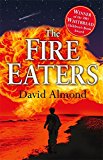 The use of dialect in prose is a controversial issue. Some authors say you should never try to reproduce a character’s dialect, but others have no qualms doing so. Take this example from Irvin Welsh’s Trainspotting:
The use of dialect in prose is a controversial issue. Some authors say you should never try to reproduce a character’s dialect, but others have no qualms doing so. Take this example from Irvin Welsh’s Trainspotting:
Any minute now though, auld Jean-Claude’s ready tae git doon tae some serious swedgin.
- Rents. Ah’ve goat tae see Mother Superior, Sick Boy gasped, shaking his heid.
Then compare it to the more accessible use of dialect in David Almond’s The Fire Eaters:
Dad winked at me.
‘When tomorrow comes,’ he said, and he changed the subject to McNulty. ‘Mebbe he’s there every Sunday morning,’ he said. ‘I should try to get to talk to him, eh?’
‘Aye,’ I said.
With so many variations of spoken English around the globe I think it would be arrogant to say that only one form is acceptable. However, I think it’s possible to reflect regional variation without clouding the meaning of the text. The key for me is the use of the occasional words in dialect and the use of local syntax and rhythm as long as they can be understood without too much deciphering. Less is more, as they say. But if you’re not very familiar with a dialect, don’t use it at all as it will just sound like a Dick van Dyke caricature.
Exercise 28:
Take the passage in Exercise 27 and rewrite it in a regional dialect with which you are familiar. First try writing the whole piece in dialect then just the odd word to give it flavour. Which do you prefer?
As usual, please feel free to post your comments or questions below. In the next creative writing course session, local poet Andy Philip will be talking about how to write poems.
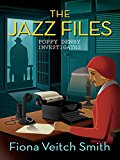

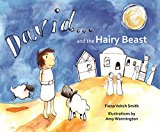
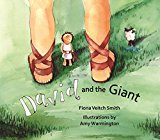
 Welcome to The Crafty Writer's free online creative writing course, presented by Fiona Veitch Smith, a freelance journalist, editor, author, playwright, screenwriter and writing teacher. I hope that you'll see a dramatic improvement in the quality of your writing as you work through this course.
Welcome to The Crafty Writer's free online creative writing course, presented by Fiona Veitch Smith, a freelance journalist, editor, author, playwright, screenwriter and writing teacher. I hope that you'll see a dramatic improvement in the quality of your writing as you work through this course. 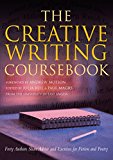
Thank you. This is part of a Creative Writing course I am
taking. This has been very helpful as I have been out of school since ’81 and this is the first CW course I have taken since then.
Thank you for posting this. I have followed your course step by step and it has helped me a lot. I love that there are exercises to test if i really undestood what you explained in the text. Good job!
Thanks for saying that Emilina. Much appreciated.
I can’t thank you enough for this course. The explanations are always so clear, and the different topics are so helpfully divided. The best thing is the exercises after the explanations, where we can ‘try it out’ and incorporate techniques into our own work. It’s so perfect!
Oh I’m delighted you’ve said that Marika. So many people wonder what the point of the course is if they don’t get one to one feedback or me ‘marking’ their work. But I had hoped people would learn from simply trying it out and incorporating the ideas into their own writing. Exactly what you’ve done!
I’m almost done with the course. And I’ve learned a lot! Thank you sooo much…
Success!
This session really told me that I am doing well. It talks about things I already do when I write my novel.
I have come back to this course several times while writing my novel, it has helped me immensely. Thank you so much for creating this course!
Oh, you’re most welcome! Good luck with the novel, Jasmyne.
Wow! This one was hard! I am NOT good at dialogue. But this was really helpful, thank you.
You’re welcome, Nikki. It’s a technique you need to work at, but if you do your writing will be greatly improved.
I learned a lot from this
I’m very glad to hear it. Hope you continue to enjoy and learn from the course.
Thank you so much for this course. It helped me a lot to overcome my short comings. Though there are a lot many things that i still need to improve but i am sure that this course will serve as a guidance for me always.
Wishing many more successes for you!
Thank you Sana. I’m very glad the course has helped you.
I write mostly for myself but this course has been very enlightening. These are hard skills to acquire. It’s been a long time since I’ve done anything with “dialogue” so that has been very challenging…always learning! Thanks!